Using Storage Tanks from Older LNG Carriers Could Boost FLNG Production
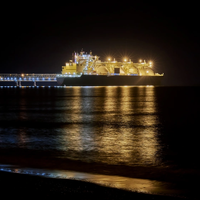
Maritime and offshore classification society American Bureau of Shipping (ABS) has granted its approval in principle (AIP) for an innovative concept for a floating LNG (FLNG) vessel utilizing storage tanks from older LNG carriers. The design, jointly developed by Kawasaki Kisen Kaisha, Ltd. (“K” LINE) and JGC Corporation (JGC), supported by Japan’s Ministry of Land, Infrastructure, Transport and Tourism, involves transferring and reusing LNG storage tanks from spherical tank (Moss tank) LNG carriers in the hulls of new FLNG facilities.By re-using existing LNG vessels’ Type B storage tanks…
Floating Power Plants: Is Nuclear the Key in the Net-zero Energy Transition?
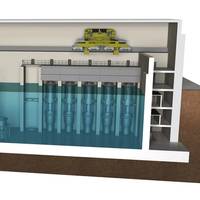
Floating nuclear power plants (FNPPs) may not immediately spring to mind as providing a solution to several of today’s key global challenges – but FNPP development is emerging as a means of decentralized stand-alone production of cost competitive hydrogen-based fuels and clean electricity and water, according to a new report by Intelatus Global Partners.The commercial case for deployment of FNPPs featuring small modular reactors is founded in the growing demand for hydrogen and…
CETO JIP to develop Low Pressure Solutions for CO2 Ship Transport
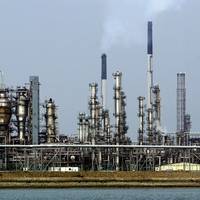
Equinor, Shell, TotalEnergies, Gassco and DNV announced the kick-off of a new JIP to develop low-pressure solutions for the transportation of CO2 by ships. The CETO (CO2 Efficient Transport via Ocean) JIP will carry out the technology qualification of a low-pressure ship design and identify solutions to scale CO2 transportation volume, while reducing the associated risks, to support the development of opportunities in CCS. CETO is funded by the project partners and GASSNOVA through the CLIMIT program and is expected to be completed in 2023.
Partners Aim to Develop Low Pressure Solutions for CO2 Shipping
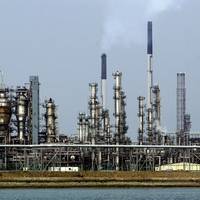
Energy companies Equinor, Shell, TotalEnergies, Gassco and classification society DNV have commenced a new joint industry project (JIP) to develop low-pressure solutions for the transportation of CO2 by ships. The CETO (CO2 Efficient Transport via Ocean) JIP will carry out the technology qualification of a low-pressure ship design and identify solutions to scale CO2 transportation volume, while reducing the associated risks, to support the development of opportunities in CCS. CETO is funded by the project partners and GASSNOVA through the CLIMIT program and is expected to be completed in 2023.
Solvang Ethylene Carrier to Be Retrofitted with CCS System
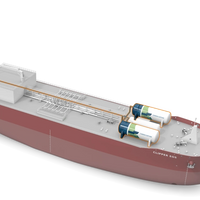
Norwegian shipping company Solvang will pilot a retrofitted carbon capture and storage (CCS) system on one of its ethylene carriers in an effort to test the technology as a potential solution to support decarbonization in the shipping industry.Wärtsilä Exhaust Treatment said it is designing the retrofitted unit while it also completes a land-based 1MW test system at its Moss headquarters in Norway. The land-based unit will be completed in Autumn 2021, and the companies expect to retrofit the pilot CCS system on Solvang's 21…
A BC Ferries Case Study: Lessons Learned in Setting Underwater Radiated Noise Targets

In a typical year, the waters surrounding British Columbia’s Port of Vancouver host approximately 3,000 deep sea commercial vessels and 19 of the 35 ferries operated by BC Ferries, one of the largest ferry operators in the world. These waters are also home to a wide variety of aquatic wildlife, including the southern resident killer whales (SRKW), which have been listed as endangered in Canada since 2003.With vessel-generated acoustic disturbances identified by Fisheries and Oceans Canada as one of four key threats to the SRKW…
Ballast-free LNG Carrier Concept Gets LR Approval
The maritime industry has taken a step closer toward ballast free shipping with the award of a new approval in principle (AiP) at Marintec China on Tuesday. GTT and Dalian Shipbuilding Industry Co. Ltd (DSIC) received AiP from Lloyd’s Register (LR) for their ballast-free shipping solution, a 30,000m³ B-FREE liquefied natural gas (LNG) carrier design, which the developers say could combine environmentally-friendly features, increased efficiency and lower build and operating costs. “While we are still in the initial stage of the project and the design is subject to ongoing change, the initial results are indicating that we will meet our goal of having a ballast-free ship that is equal to, or better than existing conventional designs,” said Ma Yingbin, Vice Chief Engineer, DSIC.
LNG Bunkering to Grow at CAGR of 62.5% to reach USD 24.684 bln in 2023
The global LNG bunkering market is expected to witness a CAGR of 62.5%, and is projected to reach USD 24684.7 million by 2023, said a report by Energias Market Research. The key factors driving the growth of LNG bunkering market are increase in LNG demand in order to reduce the carbon footprint in the shipping industry stringent international emission policy, the best cost-effective alternative fuel and significant rise in government initiatives supporting LNG adoption. LNG Bunkering is the practice of providing liquefied natural gas fuel to a ship for its own consumption. The advantage that LNG as a fuel provides is the reduction in pollutant caused by the traditional method of fuelling ships.
ABS Updates Advisory Ahead of 2020 Global Sulfur Cap
ABS said it has updated the ABS Advisory on Exhaust Gas Scrubber Systems (Scrubber Advisory) to help industry prepare for IMO’s 2020 global sulfur cap. Central to the impending 2020 global sulfur cap are requirements to reduce the sulfur oxide (SOx) emissions from ships. Installation of exhaust gas cleaning systems (EGCS), commonly referred to as scrubbers, is a potential solution for owners looking to comply with the upcoming requirements. This updated Advisory includes background on air emission regulations and explores the different types of available scrubber technologies along with the associated installation and operational challenges for each.
The Looming sVGP Deadline
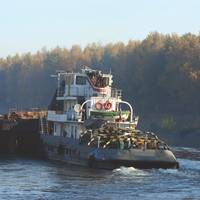
The sVGP and recent ballast water treatment system approvals create another headache for small vessel owners. Steve Candito provides a primer. The long delayed Small Vessel General Permit (sVGP) legislation is scheduled to come into force on December 18, 2017. Despite some confusion and inconsistencies on this issue generally, there is currently no serious effort to delay the sVGP requirement. Thus, vessel owners should be preparing now for compliance. Although the deadline is still months away…
Economic Impacts of STCW 2010

Our global economy and the maritime community have been greatly impacted by the implementation of the International Convention on Standards and Training, Certification and Watch keeping (STCW) 2010 Manila Amendments that went into force on January 1, 2012. Although it has been 18 years from the prior revision of the Convention and Code in 1995 and 35 years since they were adopted in 1978, the maritime industry was not fully prepared for the far reaching changes and implications to operations, training and technology.
Structural Change in Coastal, Inland Shipping
Experts discuss potential solutions at the 9th ShortSea, Feeder and Inland Waterway Shipping Dialogue. Volatile freight and charter rates, high fuel prices, unemployed vessels and the problems of ship financing are leading to structural change in coastal and inland waterway shipping. Experts are agreed on that. Yet what does this actually mean for the future of the shortsea, feeder and inland waterway ship trades? And how can companies prepare for the transition? At the invitation of the ShortSea and Inland Waterway Shipping Promotion Center (SPC) and Port of Hamburg Marketing (HHM), these and other questions on short sea and inland waterway shipping topics were discussed at the 9th ShortSea, Feeder and Inland Waterway Shipping Dialogue in the Hamburg Chamber of Commerce on 11 October.
Shipping Not Properly Prepared for Bank Meetings: Adviser
International accountant and shipping adviser Moore Stephens has warned that some shipping companies are not adequately prepared to conduct successful negotiations with their banks, which are likely to occur with increasing frequency. “Shipping is experiencing tough times,” said Paul Edwards, a Moore Stephens corporate finance director. “An increasing number of companies are unable to repay or, in some cases, even service their debts. That could mean an uncomfortable meeting with the bank. “Businesses must be able to produce properly documented and timely financial information for their stakeholders, which should include a view of the future,” Edwards continued.
U.K. Eyes Deepwater Wind Farms
As Britain's North Sea oil and gas stocks dwindle, the government is seeking new ways of harnessing natural resources to ensure a diverse and secure future energy supply. Now UPI reports, plans are afoot to utilize the North Sea's existing energy infrastructure to install a new generation of deepwater wind farms that could keep the lights on in a sustainable and environmentally benign manner. Talisman Energy U.K. Ltd. has teamed up with Scottish and Southern Energy to test the technological and economic feasibility of wind farms installed at an unprecedented water depth of 45 m. Work is under way to attach two of the world's largest wind turbines to the existing Beatrice oil platform 15 miles off the east coast of Scotland, an area that boasts some of the highest wind speeds on the planet.
Project Aimed to Reduce Emissions
The Port Authority Board of Commissioners has approved a measure to undertake a demonstration project with the New York City Department of Transportation to retrofit a Staten Island ferryboat with new exhaust emission reduction devices. If the project is successful, a new agreement between the two agencies could be developed to retrofit the remaining six vessels in the Staten Island Ferry fleet. The demonstration project grew out of discussions with the U.S. Army Corps of Engineers, the U.S. Environmental Protection Agency and environmental agencies in New Jersey, New York and New York City on air impacts associated with the upcoming project to deepen channels in New York harbor to 50 feet.





